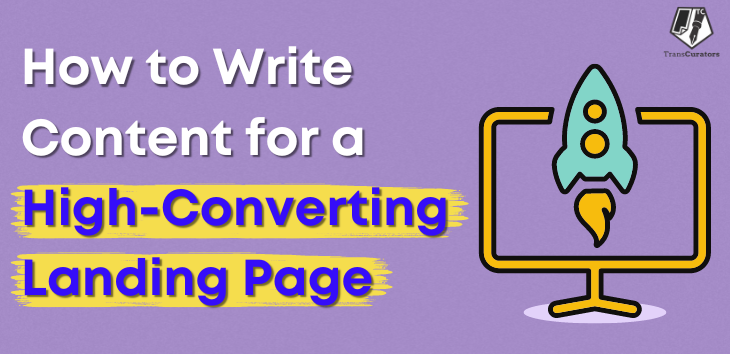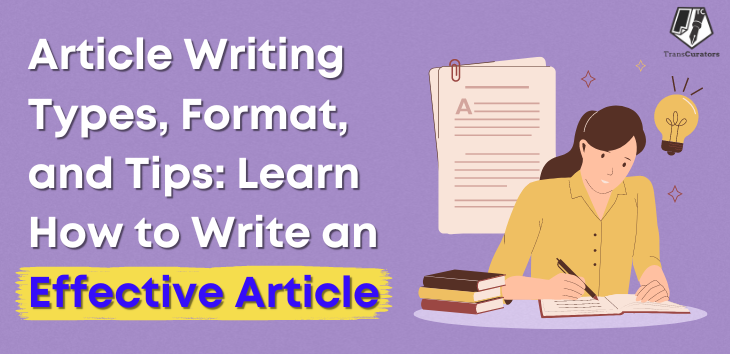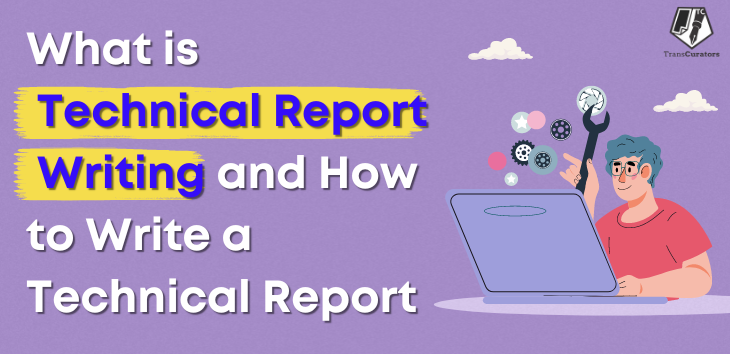
Imagine you come upon a website that immediately captures your attention. Within seconds, you understand what it offers and feel inspired to take action, whether by joining up, purchasing a product, or learning more. That is the power of a well-designed landing page. In the digital world, where attention spans are shorter than ever, a landing page is your virtual handshake. It is the first impression that potential consumers get of your brand and needs to be authentic. This guide will help you through the process of creating captivating content for your landing page so that it attracts visitors and converts them into repeat customers. Whether you’re a seasoned marketer or a newbie, you’ll find practical tips for improving your landing page content and making it work harder for you.
What Is a Landing Page?
Before you begin writing, it is critical to understand what a landing page is and what it is intended to do. A landing page is a separate web page created for marketing or promotional purposes. It is where a visitor “lands” after clicking on a link in an email or advertising from Google, Bing, YouTube, Facebook, Instagram, Twitter, or other similar websites. Unlike other websites with multiple objectives and promoting research, landing pages have a single priority or goal known as action (CTA).
When someone clicks on an online advertisement or a link in an email campaign, they often land on a landing page. The design and content of this page provide enough information to persuade the visitor to take the desired action. Critical elements of a landing page include:
- A compelling headline.
- A brief but informative description of the offer.
- Eye-catching visuals.
- A clear call to action (CTA) button.
For example, if you offer a free e-book on digital marketing tactics, your landing page can have a title such as “Get Your Free Digital Marketing E-book Now!” It would have a few bullet points detailing what’s within the e-book, an image of the e-book cover, and a prominent button that reads “Download Now.”
Landing pages that focus on a single objective and minimise distractions can efficiently turn visitors into leads or customers, making them a crucial tool in digital marketing.
How to Write Content for Landing Page?
Developing a landing page that turns visitors into leads or customers is an important skill in digital marketing. The effectiveness of a landing page is determined by its content—how well it conveys value, addresses pain points, and persuades visitors to perform a certain action. Here is a step-by-step method for creating excellent landing page content.
Step 1: Understand Your Audience
Studying the target audience deeply is the first step for creating compelling landing page content. Investigate their requirements, preferences, and pain regions. Make detailed buyer personas to assist you in understanding whom you want to serve. Understanding your audience allows you to tailor your message to resonate with their needs and desires.
- Demographics: Identify the age, gender, location, and profession of your target audience.
- Psychographics: Understand their interests, values, lifestyle, and behaviours.
- Pain Points: Identify the specific problems or challenges that your product or service can solve.
Step 2: Define Your Goal
A landing page should have a clear, single aim. This aim focuses your content and guides the user in taking a specified action. Defining your goal allows you to generate targeted and persuasive content that drives conversions.
- Primary Goal: The main action you want visitors to take, such as signing up for a newsletter, downloading a free e-book, registering for a webinar, or making a purchase.
- Secondary Goals: Additional actions that support the primary goal, such as sharing the page on social media or viewing a demo video.
Step 3: Craft a Compelling Headline
The headline is the first thing that visitors see. It must capture their attention and convey the main benefit of your service. For example, instead of “Our New Weight Loss Programme,” write “Lose 10 Pounds in 30 Days – Guaranteed!”
- Be Clear: Avoid slang and make sure the value proposition is easily understood.
- Be Concise: Use as few words as possible to convey your message.
- Be Compelling: Use strong, action-oriented language that speaks directly to the visitor’s needs.
Step 4: Write an Engaging Subheadline
The subheadline must support the title by offering more information to motivate people to read. It should go beyond the headline and showcase your offer’s unique selling point (USP). Like this: “Join thousands of satisfied clients who have transformed their lives with our easy-to-follow programme.”
- Clarify the Offer: Explain what visitors will get and how it benefits them.
- Create Curiosity: Encourage visitors to learn more about your offer.
- Support the Headline: Reinforce the main message without repeating it.
Step 5: Highlight the Benefits
Visitors should understand what’s in store for them. Instead of outlining features, focus on the benefits of your service. Explain how your product or service will help them solve problems or improve their lives.
- Use Bullet Points: Break down the benefits into easy-to-read bullet points.
- Be Specific: Provide concrete benefits and outcomes.
- Address Pain Points: Show how your offer solves specific problems.
For example:
Personalised Plans: Tailored workout and nutrition plans to fit your schedule.
Expert Guidance: 24/7 access to fitness experts for support.
Community Support: Join a community of like-minded individuals to stay motivated.
Step 6: Include Social Proof
Social proof increases trust and credibility. Include testimonials, reviews, case studies, or recommendations from satisfied clients. Like this one: “John lost 20 pounds in three months and feels more energetic than ever!”
- Testimonials: Real quotes from satisfied customers.
- Case Studies: Stories of how customers achieved success with your product.
- Trust Badges: Logos of well-known clients or media mentions.
Step 7: Create a Clear Call to Action (CTA)
The CTA is the most important aspect of your landing page. It should be straightforward, direct, and compelling. Examples are “Get Started Today” and “Download Your Free Guide.”
- Use Action-Oriented Language: Words like “Get,” “Start,” and “Sign Up.”
- Make It Stand Out: Use contrasting colours and bold fonts.
- Keep It Simple: One clear action per CTA.
Step 8: Design for Readability
Your content should be simple to read and visually appealing. You can include photographs of satisfied customers or videos demonstrating your product.
- Short Paragraphs: Keep paragraphs short and to the point.
- Headings and Subheadings: Break up the text with headings and subheadings.
- Visuals: Use high-quality images, videos, and graphics.
Step 9: Optimise for SEO
To attract organic visitors, ensure that your landing page is SEO-optimised. If your landing page is for a fitness programme, include keywords such as “fitness programme,” “lose weight,” and “exercise plan.”
- Keywords: Use relevant keywords naturally throughout your content.
- Meta Tags: Include meta titles and descriptions.
- Alt Text: Use descriptive alt text for images.
Step 10: Test and Optimise
For better performance, you should continuously test and improve your landing page. A changing headline or CTA colour boosts conversions.
- A/B Testing: Test different versions of your headline, subheadline, CTA, and other elements.
- Analyse Data: Use analytics tools to track visitor behaviour and conversion rates.
- Make Adjustments: Use the data to make informed changes and improve your landing page.
Effective landing page content necessitates a thorough understanding of your target audience, a captivating message, and an organised layout. Follow these steps to build landing page content that engages visitors and turns them into leads or customers. Remember to constantly review and optimise your page to ensure it functions optimally. Now, create a landing page that will make your visitors say, “I want this!”
Why Are Landing Pages Important in a Content Marketing Strategy?
Landing pages are essential in your content advertising strategy as they are meant to attract a visitor’s interest and convert them into leads or customers. They serve as targeted entry points for potential consumers, directing them to a certain activity. Here’s why landing pages are important:
Focused Attention
Landing pages guide visitors to a single, clear call to action (CTA). Unlike other websites, which feature a variety of links and diversions, landing pages are focused on one specific aim. Landing pages focus the visitor’s attention on performing a particular activity, such as signing up for a newsletter, downloading a free e-book, or making a purchase. This focused strategy improves the chances of conversion.
Improved User Experience
A well-designed landing page improves the user experience by offering the visitor exactly what they expect. When someone clicks on an ad or a link in an email, they hope to find relevant content. A landing page personalised to the individual offer or campaign helps visitors locate what they’re searching for, reducing frustration and increasing satisfaction. This favourable experience stimulates more engagement with your brand.
Higher Conversion Rates
Landing pages tend to have greater conversion rates than conventional web pages. This is because they are developed with a single purpose in mind and eliminate distractions that might divert visitors away from the desired action. Landing pages entice users to act immediately by providing something worthwhile, such as a free trial, discount, or exclusive information.
Better Analytics and Tracking
Landing pages make it easy to track and analyse the effectiveness of your marketing campaigns. By integrating a landing page into an ad or email campaign, you can monitor important metrics such as conversion rates, bounce rates, and user engagement. These insights assist you in understanding what works and what does not, allowing you to refine your content and strategy for better results.
Targeted Messaging
One of the most significant advantages of landing pages is their ability to convey targeted messaging. You can create many landing pages for various segments of your audience, ensuring that each group receives content that is specific to their requirements and preferences. For example, you can develop a landing page for new visitors, one for returning consumers, and another for a particular demographic. This tailored approach makes your message more relevant and compelling.
Enhanced Search Engine Marketing (SEM)
Landing pages are vital for successful search engine marketing. When you run advertising on sites like Google or social media, directing traffic to an appropriate landing page boosts your ad quality score. A higher quality score can result in better ad placements and cheaper expenses per click—search engines like landing pages that provide consumers with a seamless and relevant experience.
Lead Generation
One of the primary goals of content marketing is lead generation, and landing pages are excellent at it. Landing pages assist you in compiling a list of possible customers by providing helpful content, such as whitepapers, webinars, or e-books, in return for contact details. For lead nurturing via email marketing and other follow-up techniques, this list is priceless. You can maintain a comprehensive sales funnel and expand your email list with strategically crafted landing pages.
Building Brand Credibility
A polished and informative landing page increases your brand’s reputation. When visitors arrive at a website that looks attractive and has valuable information, they are more inclined to trust your business. Including testimonials, case studies, and trust badges on your landing page will boost visitors’ confidence and convince them to take action. Credibility is essential for turning visitors into buyers, and a well-designed landing page can help establish that trust.
Cost-Effective Marketing
Landing pages are a cost-effective approach to boost conversions. They maximise the return on investment (ROI) from your advertising budget by guaranteeing that more of your visitors perform the required action. Landing pages maximise the value of your marketing expenditure by increasing conversion rates. This efficiency is especially significant for small firms and startups that have limited marketing budgets.
Flexibility and Adaptability
Landing pages can easily be updated and tested to enhance performance. A/B testing alternative headlines, graphics, CTAs, and other features will help you figure out what works best for your audience. This flexibility allows you to modify your landing pages for better results constantly. As market conditions and customer preferences shift, you can change your landing pages to remain relevant and effective.
Landing pages are an important part of any successful content marketing strategy. They offer a targeted, user-friendly experience that directs users to do a specific action, leading to increased conversion rates and improved campaign success. Landing pages assist visitors in converting into leads and customers by delivering focused messaging, improving user experience, and providing informative content. Their ability to measure and analyse performance, increase brand reputation, and provide flexibility makes them essential for efficient content marketing. If you want to improve your marketing efforts and reach your company objectives, you must incorporate well-designed landing pages into your plan.
Best Practices for Creating an Effective Landing Page
Creating a good landing page is critical to turning visitors into leads or customers. To achieve this, adhere to key best practices that guarantee your landing page is entertaining, clear, and convincing. Here are some essential recommendations for creating a high-performing landing page.
1. Clear and Compelling Headline
The headline is the first thing visitors see, so it needs to grab their attention right away. Make sure to properly express the major benefit of your offer. It should be brief and convey the value visitors will receive.
2. Engaging Subheadline
The Subheadline should complement the main title by offering further information about the offer. It can encourage people to stay on the page and read more. Keep it clear and informative.
3. Focus on One Goal
A landing page should have a single, clear aim. Whether it’s collecting email addresses, advertising a purchase, or registering for a webinar, make sure everything on the page promotes this one Goal. Avoid including multiple offers or distractions.
4. Strong Call to Action (CTA)
Your CTA button is essential for conversion. Use action-oriented language that instructs visitors on what to do, such as “Download Now,” “Sign Up Today,” or “Get Started.” Make the CTA stand out visually by utilising contrasting colours and a prominent place on the page.
5. Use High-Quality Visuals
Images, movies, and graphics can significantly enhance your landing page. Use high-quality pictures that are relevant to your product and will help you communicate your message quickly. For example, a video describing your product or service can be more interesting than text alone.
6. Highlight Benefits, Not Features
Instead of outlining features, focus on the benefits that your service offers. Visitors want to know how your product or service will help them solve issues or enhance their lives. Use bullet points to make the benefits easy to read and understand.
7. Include Social Proof
Social proof, such as testimonials, reviews, and case studies, can assist in building trust and credibility. Positive feedback from satisfied consumers reassures visitors that your service has benefited others. Please include authentic names and photographs, if possible.
8. Keep the Design Clean and Simple
A cluttered landing page can overwhelm visitors and lower conversion rates. Use a clean, simple style with enough white space to make your content easier to read. Maintain a consistent colour scheme and typography that represents your brand.
9. Mobile Optimization
Make sure that your landing page looks amazing and functions properly on mobile devices. Because a significant number of customers use smartphones to access the internet, your page must be mobile-friendly. Use responsive design to accommodate varied screen sizes and ensure quick loading times.
10. A/B Testing
Continuously test various elements of your landing page to see what performs best. A/B testing lets you compare different headlines, CTAs, pictures, and other components to determine which one works better. Use the results of these tests to optimise your page for higher conversions.
11. Address Objections
Anticipate and address frequent objections or concerns that visitors might have on your landing page. This can include a FAQ section, clear terms and conditions, or a money-back guarantee. By addressing concerns directly, you eliminate hesitation and increase trust.
Following these best practices will help you to create landing pages that convert visitors into leads or customers. Focus on clear language, a strong call to action, high-quality pictures, and a clean design. To boost performance, test and optimize your page continuously. With these strategies, your landing pages will yield greater results and help you achieve all your marketing goals.
Conclusion
Creating great content for a landing page requires an organised strategy that prioritises clarity, relevancy, and compelling components. Understanding your target, having clear objectives, and emphasising advantages over features will help you write appealing content that sells. Remember to employ interesting headlines, clear calls to action (CTAs), and visually attractive components to improve the user experience. Continuous testing and refining are required to optimise your landing page for optimal efficiency. Are you ready to boost your landing page content? Contact TransCurators now for expert help and optimisation! TransCurators can help you refine your content strategy with expert advice!
Frequently Asked Questions
A1. Use clear and direct language that focuses on the benefits of your offer. Highlight how your product or service solves a problem or meets a need for the visitor.
A2. Yes, testimonials provide social proof and build credibility. Use quotes from satisfied customers that highlight their positive experiences with your product or service.
A3. Visuals such as images, videos, and infographics help to illustrate your offer and make the page more engaging. Use high-quality visuals that are relevant to your content.
A4. Mobile optimization is crucial as many users access websites on smartphones. Ensure your landing page is responsive and loads quickly on mobile devices for a seamless user experience.
A5. Track key metrics such as conversion rates, bounce rates, and click-through rates using analytics tools like Google Analytics. A/B testing different elements can also help optimize performance.



